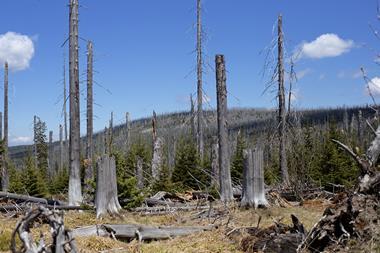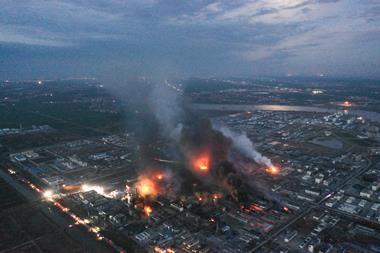Thirty-eight people were hospitalised after containers holding anhydrous ammonia leaked while being transported via tractor on 25 April in a village 50 miles north of Chicago, Illinois. The victims, who experienced breathing difficulties, included 11 firefighters, two sheriff’s deputies, and one police officer. Seven of these individuals were in a ‘critical’ condition, and two remain in hospital. They have both been upgraded to ‘serious’ condition.
When county officials arrived at the scene of the incident, they observed what appeared to be a cloud of smoke and retreated after being overcome by the fumes, according to a Lake County statement. Individuals living within a one-mile radius of the incident were instructed to stay put for more than five hours, keeping all windows closed and their heating, ventilation and air-conditioning systems turned off. Law enforcement and fire personnel went door-to-door to check on residents’ health. The vehicle carrying the materials in question was being driven by a private farmer, rather than a retailer. The incident is under investigation by the police and the National Transportation Safety Board.
Ammonia is used as an agricultural fertiliser and industrial refrigerant but can pose a danger to people should it leak out because of its suffocating fumes, according to the Centers for Disease Control and Prevention (CDC). The agency warns that the substance, which is also a key ingredient in the production of illicit methamphetamine, can be ‘immediately dangerous to life or health’ when handled improperly.
When ammonia becomes airborne, it quickly expands and forms a large cloud that acts like a heavier-than-air gas. ‘Because the vapours hug the ground initially, the chances for humans to be exposed are greater than with other gases,’ the CDC explains. Symptoms of exposure include eye, nose and throat irritation, as well as respiratory problems, wheezing, chest pain, and pulmonary oedema. Death can occur at high levels.
The Fertilizer Institute (TFI), an industry trade group based in Washington, DC, issued a statement the day after the incident, saying the compound requires ‘careful attention’ to safety. ‘Since it is water soluble, free ammonia will rapidly react with body moisture such as lungs and eyes to cause severe damage,’ the lobby group said. It noted that the substance is regulated in the US at both the federal and state levels.
‘This is highly, highly anomalous,’ TFI spokeswoman Kathy Mathers tells Chemistry World. ‘Typically, this material is handled, transported and applied in places that don’t have dense populations, out in agricultural areas. And, the typical retailer handling anhydrous ammonia has a pretty sophisticated sense of how to ensure that the trailer and all the hoses associated with it are secured.’
Chris DeMoss, director of plant foods and transportation at agriculture supplier MFA in Columbia, notes that the Department of Transportation requires routine inspections of the tanks and valves of the containers used to store and transport ammonia. ‘There are a lot of precautions that are taken, it is classified as a hazardous material,’ he says.

















1 Reader's comment